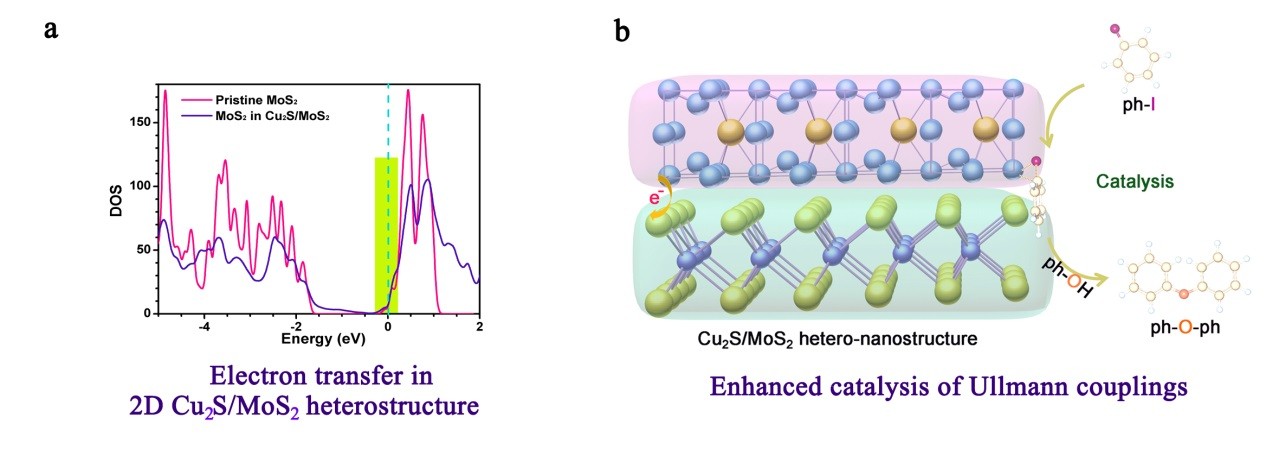Interface Engineering in Two-Dimensional Heterostructures for catalysis in Ullmann Couplings
Highly efficient catalysis for organic reactions is of great significance in research area of pharmaceuticals and chemical engineering, among which precise control of catalyst’s electronic structure plays an vital role. For most organic reactions, the electrophilic or nucleophilic surface of a catalyst would activate chemical bonds and boost the formation of intermediates, resulting in a decrease of activation reaction energy to accelerate the reaction; however, how to precisely manipulate the catalyst’s electro/nucleophilicity to be applicable for organic reactions still remains a grand challenge.
Motivated by such challenge, researchers Professor Changzheng Wu’s research group, from University of Science and Technology of China regulated the electro/nucleophilicity of the catalyst by interfacial effect, bringing a superior catalyst for Ullmann couplings. In detail, they i developed a general synthetic procedure for the synthesis of a series of TMC/MoS2 heterostructures covering from Cu2S/MoS2, CdS/MoS2, to FeS/MoS2, via a liquid phase domain-matching epitaxial growth mode. In the case of 2D Cu2S/MoS2 heterostructure, researchers employed various characterization techniques such as XAES, Raman spectroscopy, UV/Vis spectroscopy to verify the existence of strong interfacial effect in the heterostructure. To investigate the surface structure and valence state of the element, research collaborator at the Catalysis and Surface Physics Endstation, National Synchrotron Radiation Laboratory characterized elemental valence state changes, confirming the existence of an interfacial charge transfer. Further theoretical calculations revealed that a spontaneous electron transfer was triggered from Cu2S to MoS2 due to the difference in work functions of the components at the interface, enhancing the electropositivity of Cu2S. The enhanced electropositivity would favor a nucleophilic attack from the reactants, bringing superior catalytic activity for Ullmann couplings at low temperatures. This work demonstrates that interface engineering in 2D heterostructures has been a promising approach for optimizing the electro/nucleophilicity of the catalysts to improve their performance in organic reactions. Related result has been published in Angew. Chem. Int. Ed. As Very Important Paper, entitled “Interface Engineering in Two-Dimensional Heterostructures: Towards an Advanced Catalyst for Ullmann Couplings”. [Angew. Chem. Int. Ed. 2015, 10.1002/anie.201508571(VIP paper)]

Interface engineering triggering interfacial electron transfer towards enhanced catalysis of Ullmann couplings.
2 - 副本.jpg
Back

